21 Fun Climbing Games to Amp Up Your Rock Climbing Training
We talk about hiking and backpacking a lot here on She Dreams of Alpine, but it’s equally worth noting that I LOVE climbing. Michael and I train weekly and travel all over the country and even internationally to visit our favorite climbing areas. (In fact, I’m writing this post while we are visiting the Rocklands in South Africa for a month of bouldering.)
Now, even though a good focused climbing training plan can help take you to the next level in your climbing, sometimes you just have to have a little fun and take a break from strict regimented climbing training. When Michael and I get bored with our weekly routine or just need a break, we often like to add in some climbing games to get the creative brain flowing again.
In this post, I’ve compiled 21 climbing games that can help you spice up your rock climbing training routine or just help you to have a bit of fun on the wall.
Note: Most of these climbing games are best done at an indoor rock climbing and bouldering gym, but some could probably be done outdoors as well depending on the area.
21 FUN rock CLIMBING GAMES
1) ADD-ON
Number of Players: 2 at minimum (preferably that have similar climbing ability), you could do more climbers, but less is better, otherwise it takes a long time.
Equipment Needed: Your climbing shoes and chalk. Most people do this by memorizing the holds, but you could also add tape or chalk them as you go.
Rules of the Climbing Game: You and your partner start by agreeing on 3-5 initial climbing moves. Then one of the climbers starts on the wall first and starts those first moves and then “adds on” one more climbing move to the first set of moves. The added on move typically consists of a new hand hold plus a set of footholds. Then the second climber repeats those moves that the first climber did, but “adds on” one more at the end of his or her time climbing. Continue switching back and forth until you can’t keep going.
You can also play this as if you have a set of 3 lives each. For instance, if you complete all the movements, you are safe, but if you fail to complete the movements, you lose a life. If you fail to complete the movements 3 times in a row, you lose (or are eliminated if in a bigger group). Keep playing until only one person is left standing.
Helps You Train: Endurance and visualizing your climb in advance
2) TAG
Number of Players: A small group of people, possibly 3-6.
Equipment Needed: Climbing shoes and chalk. Would probably also be easier to play in a less crowded gym area.
Rules of the Climbing Game: Like with a normal game of tag, but instead of running around, you all start on the wall. Pick one person to start as the “it” person. That person then has to climb to another person and touch them in order for them to be it. Then the new “it” person must tag someone else new. The person who just tagged someone “it” gets to take a rest and can climb down the wall until the next person is tagged “it”. So on and so forth.
Helps You Train: Endurance and stamina on the wall.
3) TWISTER
Number of Players: 3 or more people
Equipment Needed: Climbing shoes and chalk. Grab a twister board spinner (From the actual twister board game if you have it), or make your own by writing on some pieces of paper, “Right hand”, “Left hand”, “Right foot”, and “Left foot” and the colors on separate pieces of paper. You could also download a Twister spinner app on your phone.
Rules of the Climbing Game: You play this game sort of the same way you would play the Twister board game. Start with one person spinning (or picking the pieces of paper). Then the other climbers start on the climbing wall based on what the spinner calls out. Here is an example, “Right hand on red hold” and
Left foot on yellow”, you could also make this more challenging by adding in “types of holds”, i.e. “Right hand on red crimp”. Etc. When you are no longer able to execute the movement yelled out, then you are eliminated from the group.
This game is easier to play in a gym with a large variety of holds on the wall.
Helps You Train: Endurance, balance, and core work
4) GOLF
Number of Players: 2 or more people. This game is best played with climbers of similar abilities.
Equipment Needed: Climbing shoes and chalk.
Rules of the Climbing Game: In your group pick at least 6 or more different bouldering problems that your group could all potentially climb. Then treat each bouldering problem similar to a round of golf, and each problem is like a different “hole”.
Take turns within the group trying the problem, but try to use a few holds as possible. Each person only gets one try per problem. Keep track of the points as you go through all of the problems.
1 point for (or “stroke”) for each hand hold used.
3 point penalty for every fall
The person with the least amount of points at the end of all the problems wins the game.
Whoever has the least amount of points at the end of the course wins.
Helps You Train: Reading a climb, dynamic movements (due to trying to use the least amount of holds as possible), endurance
5) POINTER
Number of Players: 2 players
Equipment Needed: Climbing shoes and chalk. It’s also nice to have a longer stick or stick brush of sorts to point out holds. See my tutorial on how to make an easy bouldering stick brush to make your own.
Rules of the Climbing Game: Start with one person as the pointer and one person as the climber. The climber gets on the wall, and the pointer points to the next hold they must move to. Try to do this fairly fluidly, for example, as the climber moves, start pointing out the next hold already. Once the climber falls, then switch positions.
Helps You Train: Onsight skills and endurance
GRAB MY [FREE] OUTDOOR BACKPACKER STARTER KIT
I created the Ultimate Outdoor Backpacker Starter Kit for you (and it's FREE)! This starter kit is filled with 14 pages of my best hiking and backpacking tips to help you learn what it takes to become a safe, confident, and self-sufficient outdoor backpacker!
6) Beta Games
Number of Players: 2 or more
Equipment Needed: Climbing shoes and chalk
Rules of the Climbing Game: Within your group, the one person picks a route or problem on the wall and climbs it. Then everyone else in that group must repeat that problem using the exact same climbing beta as the first person.
Helps You Train: Reading a climb, endurance
7) HOT LAVA
Number of Players: 2 or more
Equipment Needed: Climbing shoes and chalk. String and (possibly tape).
Rules of the Climbing Game: Pick a big section of the wall and then wrap string/tape around certain climbing hold areas. These areas are the “hot lava”. Then start from one end of the wall and try to make it to the other end without using any of the hot lava holds. To make this harder, make more hot lava areas.
Helps You Train: Route finding, endurance, foot-work
8) MEMORY
Number of Players: 2 or more
Equipment Needed: Climbing shoes and chalk
Rules of the Climbing Game: One person picks out a route or problem by pointing out 4-10 different bouldering moves. There’s no taping involved here, and instead you must memorize the moves and each person must repeat those moves exactly as pointed out.
Helps You Train: Visualizing a climb
9) NO HANDS CLIMBING
Number of Players: 1 or more
Equipment Needed: Climbing shoes and chalk
Rules of the Climbing Game: This is a simple, but surprisingly fun game. Pick a climb and challenge yourself by using no hands to climb the route.
Helps You Train: Footwork and balance
10) SINGLE-FOOT CLIMBING
Number of Players: 1 or more
Equipment Needed: Climbing shoes and chalk
Rules of the Climbing Game: Similar to the game above, pick a climb and challenge yourself to use either only your right foot to climb it, or only your left foot. You can use both your hands in this one.
Helps You Train: Footwork and balance
11) LUCKY-DRAW
Number of Players: 2 or more
Equipment Needed: Climbing shoes and chalk, plus on slips of paper write down a bunch of different climbing movements (at minimum 10). Here are some examples: right hand crimp, two-hand dyno, knee-bar, drop knee, gaston, left hand pinch, etc. Write as many as you’d like.
Rules of the Climbing Game: Within your group, pick out 4 pieces of paper. Then try to create a boulder problem that at least includes all of those 4 movements, and take turns climbing the problem.
Helps You Train: Practicing different climbing movements and visualizing a climb
12) DRAG RACE
Number of Players: 2 players
Equipment Needed: Climbing shoes, chalk, and a timer.
Rules of the Climbing Game: This game is played against a partner and can be done on top-rope problems or on bouldering problems.
If playing on top ropes, you will set your timer to 30 minutes. If playing on bouldering problems, then set your timer to 15 minutes.
Start the timer and you and your opponent try to climb as many climbs as possible during the allotted timeframe. Keep track of the points as you go (only counting problems that you completed).
Example of points system:
5.10 = 10 points
V4 = 4 points
The player with the most points at the end of the time wins the game.
Helps You Train: Endurance
13) TAKE-AWAY
Number of Players: 1 or more (but smaller groups are better)
Equipment Needed: Climbing shoes and chalk.
Rules of the Climbing Game: With your group, create a route that has at least 20 holds or so that creates an entire problem. More holds are better to start with. Mark your created route with chalk. Then take turns in your group completing the route you created.
Once the last person in the group completes the initial route, he removes one chalk mark. Then the group try to complete the problem without the removed hold.
If the next person can’t complete the climb with the missing hold, then it goes to the next person in the group. If no one in the group can complete the climb without the missing hold, then the person who erased the mark must prove its possible. Keep playing and removing chalk marks from the problem until there is only 1 person left standing.
Helps You Train: Route finding, creative thinking, dynamic movements
14) DYNO
Number of Players: 2 or more
Equipment Needed: Climbing shoes and chalk
Rules of the Climbing Game: Pick a set of foot holds and hand holds to start on, and pick a larger hold higher up above the initial hand holds to “dyno” to. Within your group take turns doing the “dyno” you created.
Helps You Train: Dynamic movement
15) LEMON-LIMES
Number of Players: 1 player
Equipment Needed: Climbing shoes and chalk
Rules of the Climbing Game: This is a challenging little endurance game, and is easily played with just one person. To start, pick a bouldering problem. Start by making one move of the problem, and then reversing back to the start. Never “officially” come off of the problem. Then go back up the problem and add on a new move... and reverse. Continue this until you’ve made it to the top of the problem. This portion is called “the lemon.”
The next portion is “the lime.” Stay on the problem after you’ve completed the lemon and do exactly what you did, but in reverse from the top. Down climb a move and climb back to the top. Repeat until you make it back to the bottom of the climb.
Helps You Train: Endurance and footwork
16) SHARK ATTACK
Number of Players: Better for larger groups
Equipment Needed: Climbing shoes and chalk
Rules of the Climbing Game: Shark Attack is similar to playing musical chairs, but for climbing. One person is the leader of the game, and everyone else stands in an inward facing circle. The leader will then yell out “shark attack” and everyone must run to the wall and climb on. You must have all hands and feet on the wall. The last person onto the climbing wall is out. Continue playing until only one person is left standing.
This would be a fun game to play with kids.
Helps You Train: More just for fun than training.
17) PICK-UP
Number of Players: Better with bigger groups
Equipment Needed: Climbing shoes and chalk PLUS items to collect from the wall.
Rules of the Climbing Game: Again, this is another fun game for kids, but could be equally fun for adults. To set up the game, place a bunch of different items on different holds on a climbing wall. Then when you say start, the players must collect the items from the wall. The person with the most collected items wins.
I’ve also seen this done at climbing competitions where prizes are places at the top of harder climbs, and the first person to complete them gets to keep the prize.
Helps You Train: Route finding
18) 4X4
Number of Players: 1 person
Equipment Needed: Climbing shoes and chalk
Rules of the Climbing Game: 4x4s are more of a training game than fun, but we will keep it on here because it’s great for training. Start by picking 4 different routes that you know you can complete. Climb each problem in a row, rest 4 minutes, and repeat the 4 problems again until you’ve done each problem 4 times.
So in a nutshell: 4 problems, 4 sets, and 4 minutes rest between sets.
Helps You Train: Endurance and stamina
19) TIMES-UP
Number of Players: 2 or more
Equipment Needed: Climbing shoes, chalk, and a timer
Rules of the Climbing Game: Start with 10 seconds. The first climber in your group jumps on the wall as soon as the timer starts and tries to climb using as many holds as possible (keep count of the hand holds). Then when time is up he comes off. The rest of the group tries to beat that number of holds within the 10-second time limit. The person who reaches the most holds within 10 seconds wins.
You don’t have to do this using the same route, but to make it harder you could do this.
Then increase the time for the next round until you are tired.
Helps You Train: Endurance and route finding
20) HORSE
Number of Players: 2 or more
Equipment Needed: Climbing shoes, chalk, and dice
Rules of the Climbing Game: If you and your fellow climbers want to try a fun climbing game that improves your strength and balance, then horse is a simple option. It involves climbers each competing to complete a route or problem using the number of holds decided using a dice. Everyone in the group tries to complete the problem with the number of moves determined by that first dice roll. Anyone who fails to complete the problem is “out”.
Within your group pick a climbing problem that you want to climb. Then one person rolls the dice to determine the number of moves they are allowed to climb the problem. The start hold is not considered a move.
Once the first problem is completed, the remaining players move onto a new problem, and again roll the dice and repeat the game until only one climber is left standing.
Helps You Train: Balance, dynamic movement, and route finding
21) SIMON-SAYS
Number of Players: Good with larger groups
Equipment Needed: Climbing shoes and chalk
Rules of the Climbing Game: Play this rock climb game like you would play a normal game of Simon Says. The leader stays on the ground and shouts the commands. All players start at the bottom of the wall, and stay there until Simon yells out a command, i.e. “Simon says, move your right foot”, or possibly make it more specific, “Move your right hand to a crimp”. You lose if you fail to follow Simons commands or if you fall off.
Helps You Train: Stamina
CLIMBING GEAR LIST
If you’re new to climbing or looking to upgrade your gear, here’s a list of some of my favorite climbing gear. This is more focused on bouldering gear, since that’s what you’ll need for most of these climbing games, but I’ve included some other gear as well.
Note: The list below contains affiliate links.
For even more climbing gear recommendations, check out my Best Gifts for Rock Climbers post.
Hope that you found a rock climbing game here that piques your interest and will make your climbing training a bit more exciting if you are feeling a bit in a rut from training. Happy Training!
Looking for even more climbing related articles?
Check out these articles on the site!
Climbing Destination Guide - Bouldering At Hueco Tanks State Park in Texas
10 of My Favorite Bouldering Problems in Bishop, California for the V0-V3 Boulderer
Cheers,
Allison - She Dreams of Alpine

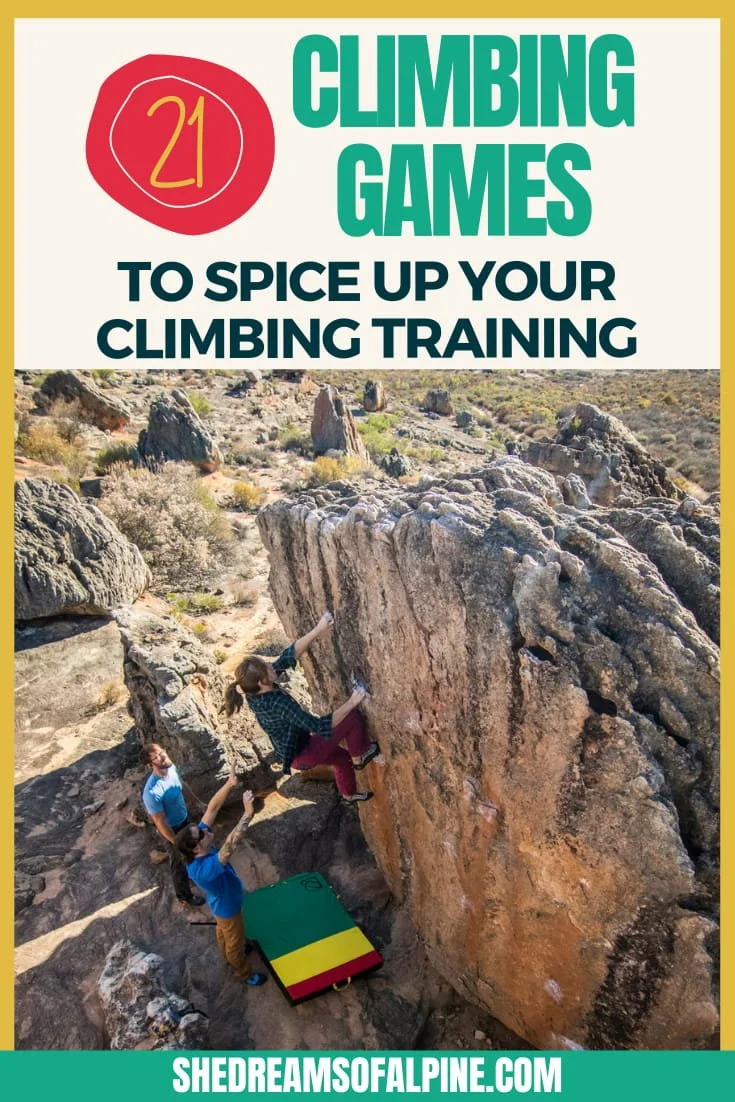
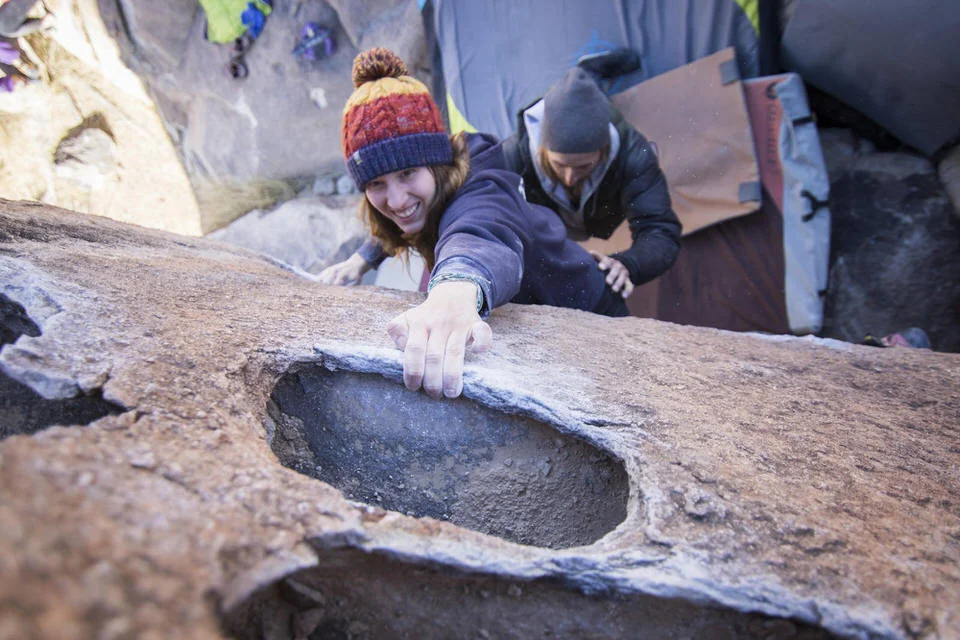
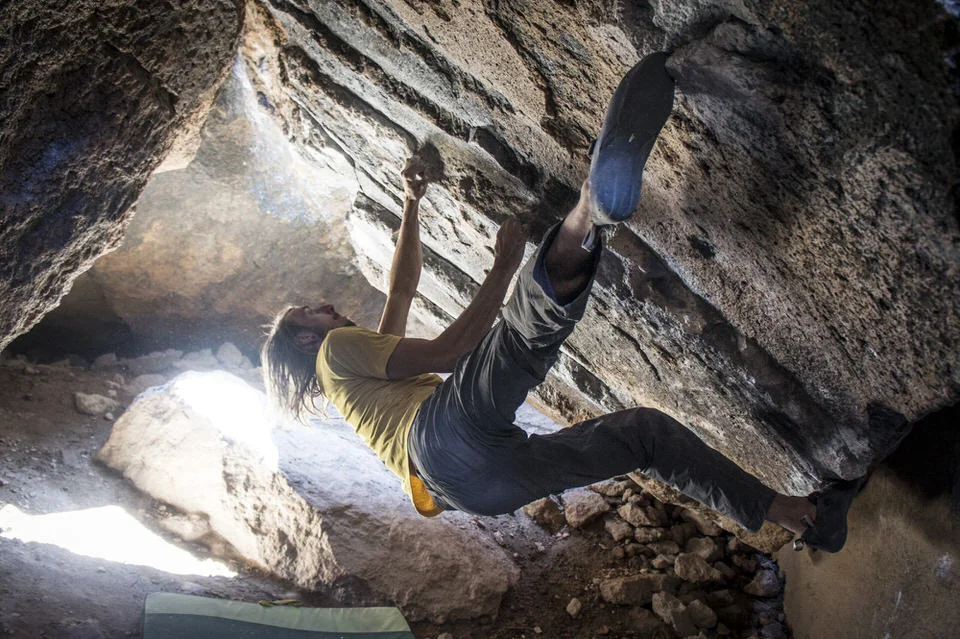
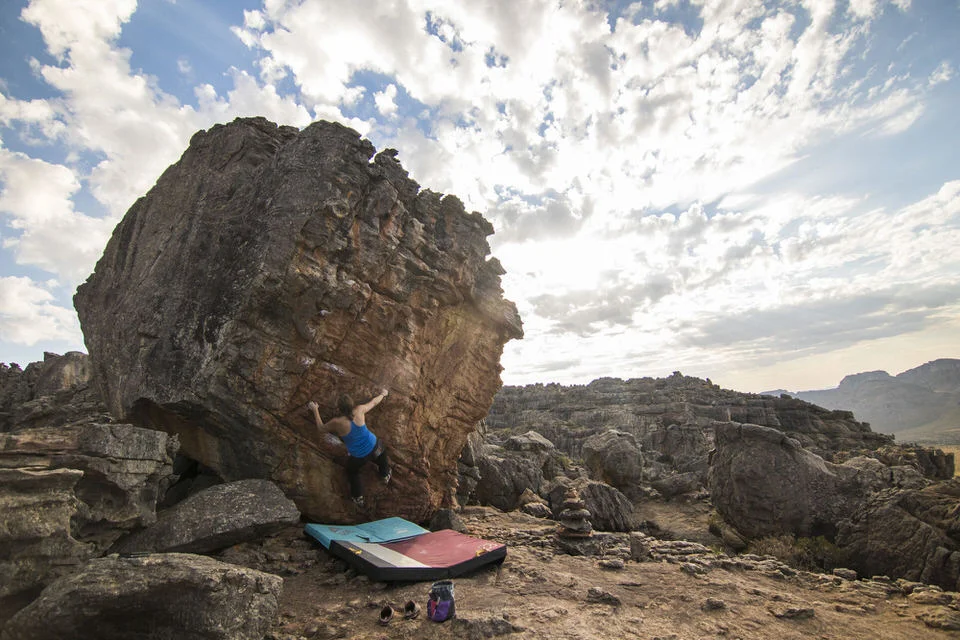

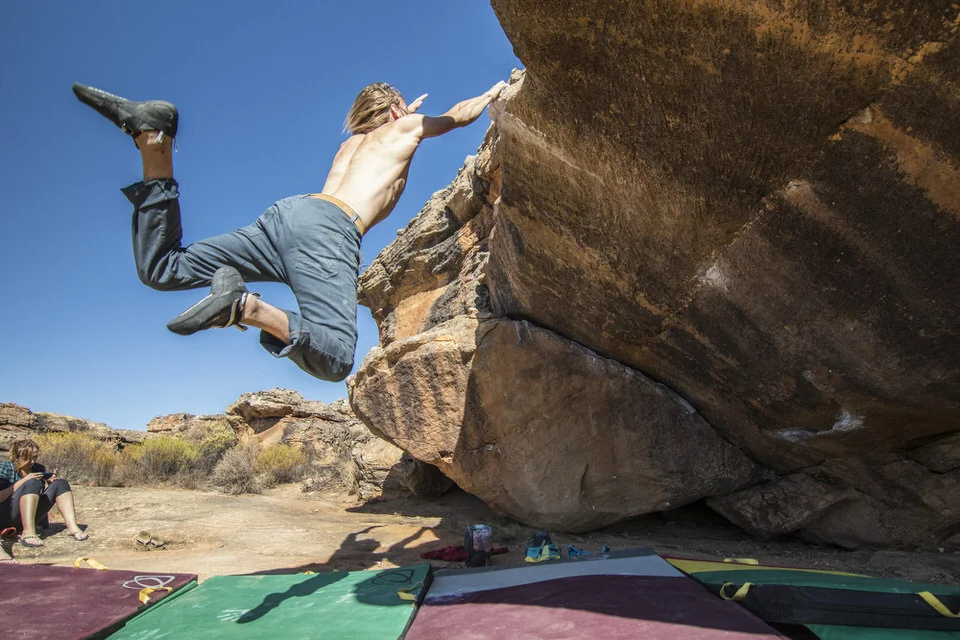
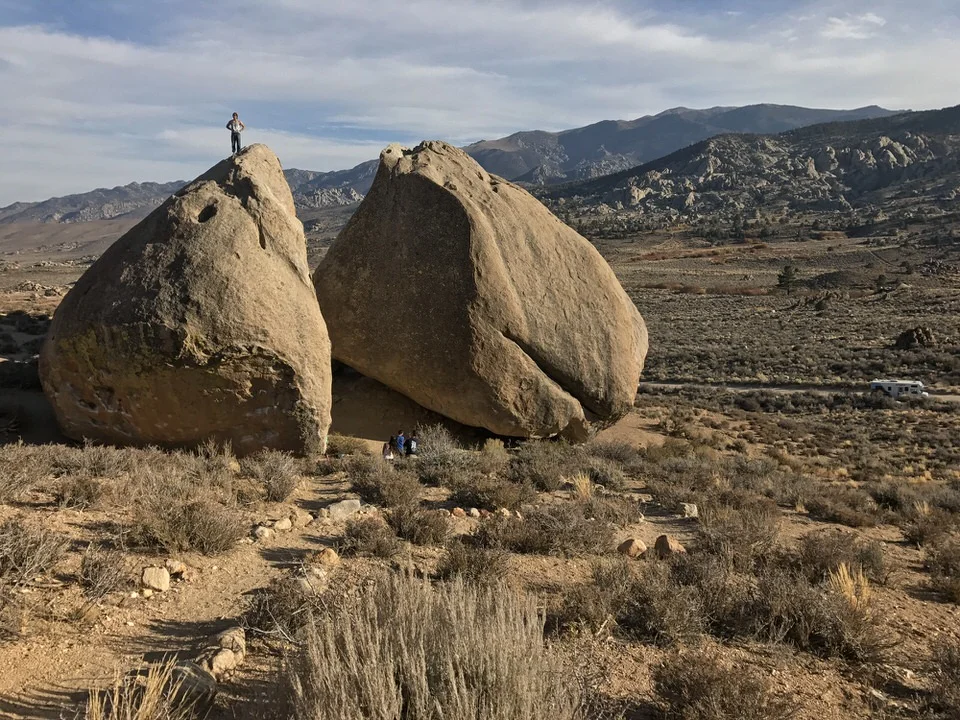

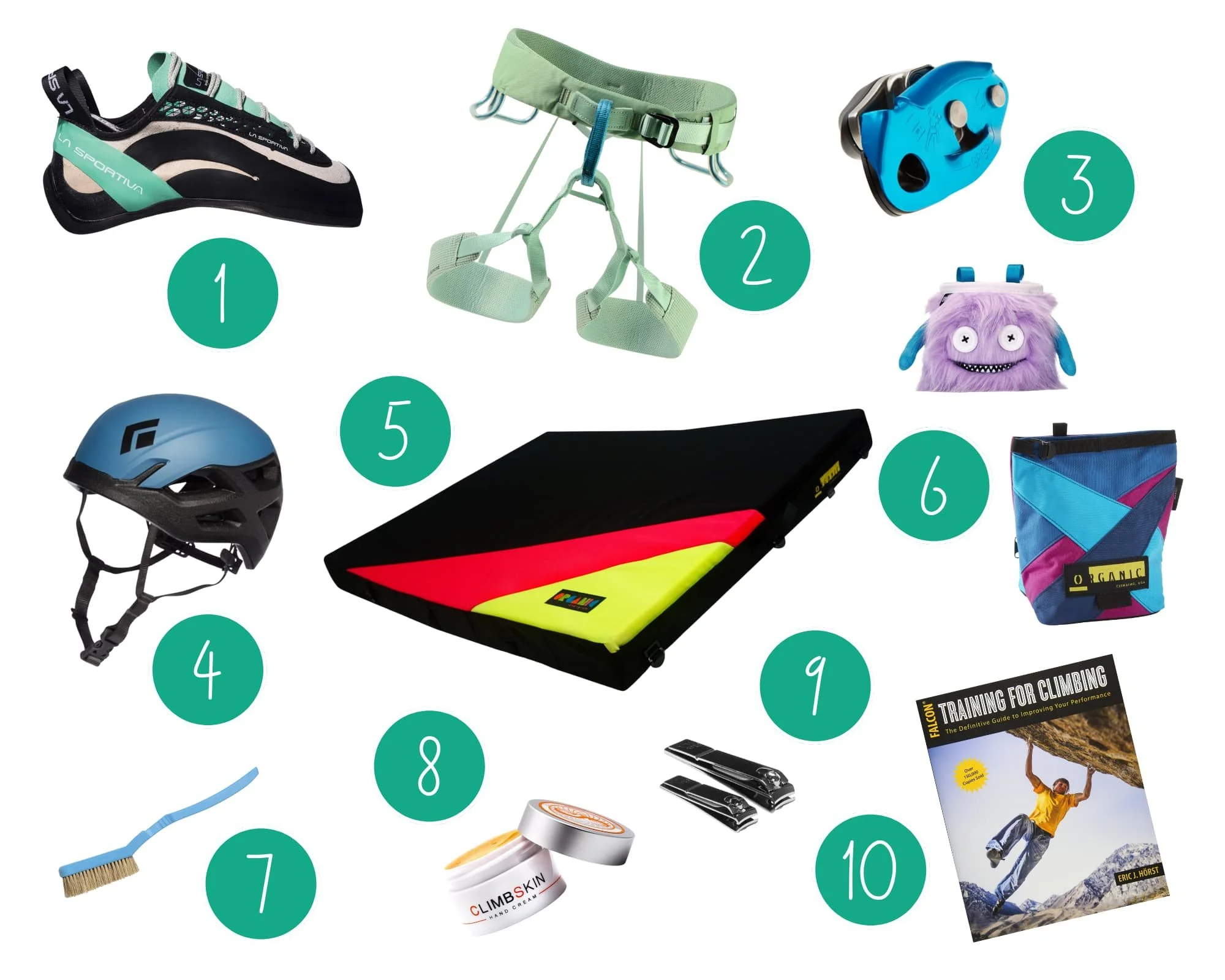
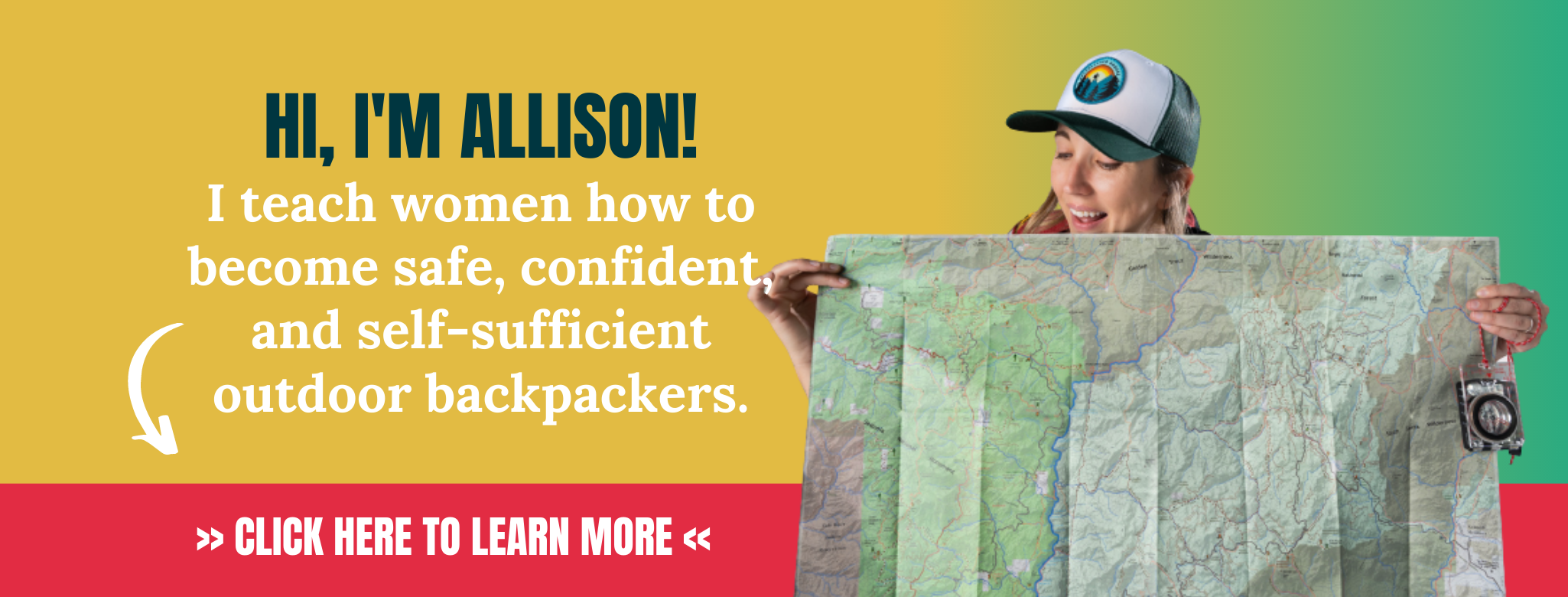










The Ultimate Guide to Free Camping | When you’re exploring the outdoors, whether you’re backpacking in the backcountry or doing the van life thing, you’ll need to find a place to spend your nights. While campgrounds are usually cheaper than hotels, the campsite fees can certainly add up over a long trip. But free camping is a great way to save money on your adventures! | shedreamsofalpine.com